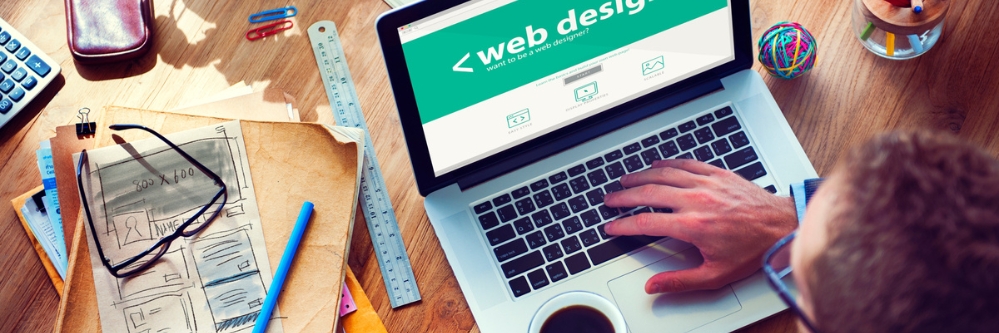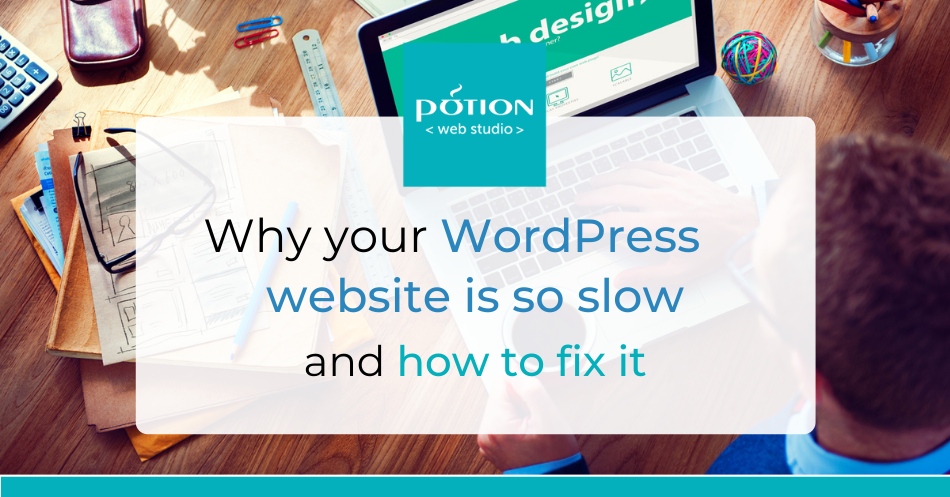Do you find yourself asking, “but WHY does my WordPress site load so slowly?”
It’s a common frustration for website owners. You know from experience that a slow-loading site will lose your attention faster than a cheetah in a running race. There’s no way you want users to feel that same irritation when they try to visit your site – because you know they’ll go elsewhere.
Website speed matters. It matters for UX (User Experience), and it affects search engine rankings, too. So what can you do to speed up your slow site?
We’ve got some simple, straightforward tips to help you fix your slow WordPress site.
Understanding the Causes of Slow WordPress Websites
1. Bloated themes and plugins
One of the benefits of using WordPress is the done-for-you themes and plugins. They make your site look smart and add functionality.
Unfortunately, not all themes and plugins are created equal. Some come with bloated coding – that’s code that’s overly complicated for the task it’s meant to do. When your site has to run more code, that takes up processing power. If the code’s unnecessary, it’s inefficient. And lots of bloated code significantly impacts your website speed.
2. Large image sizes and other unoptimized media
Large image files make your WordPress site load more slowly. Other media can cause a problem too, like videos or embedded content.
That’s because there’s more information to be sent to your user’s device. And that takes longer. Simple.
Since the browser needs all the page assets loaded before it can display your site, large images and other media slow everything down.
Large files also take up space on your server. It’s another reason your WordPress site could be running slowly – especially if you don’t have high-quality hosting.

3. Excessive HTTP requests
Excessive HTTP requests can be a reason why your WordPress website is sluggish. An HTTP request is when a user’s web browser asks your server to display the webpage, and the server responds by sending back the info.
The problem is, it’s not just one request per page. It’s for every single thing the browser needs to load a site properly – each image, video, plugin, CSS style sheet or JavaScript code.
It’s like carrying groceries from the car to your kitchen. If you have only a few bags, you can make one trip and finish quickly. But if you’ve been on a spending spree, you’ll have loads of bags, and you’ll need to make multiple trips. And that takes more time and effort.
Excessive HTTP requests have the same effect – all that back-and-forth makes your website slower because several trips are needed to gather all the files.
4. Lack of caching mechanisms
If you don’t have the right caching mechanisms, this can cause your WordPress website to load slowly. Why?
Imagine you’re throwing a party, but every time a guest’s drink needs freshening, you need to traipse off to fetch the items from different rooms in your house. It would be time-consuming, right? Ice from the freezer in the basement, a new glass from the dining room, a bottle opener from the kitchen drawer, a coke from the fridge. It’s slow and tiring – your guest’s going to die of thirst before they get that drink.
Similarly, without caching, your user’s device has to fetch all those necessary bits of information from the server every time they visit your page. It causes delays. And no one’s having fun.
But if you can keep everything nearby – creating a handy bar area with a supply of glasses, an ice bucket, a fridge for the cola and a bottle opener on the side – those drinks (and your website) can flow much faster. Finally, your user – and you – can relax and enjoy the party.
Effective strategies to speed up your WordPress website
Optimizing your WordPress website for speed sounds like a job for the pros, right? Well, even though it might seem a little scary at first, there’s stuff you can do even if you’re not a web developer yourself.
1. Update WordPress and your plugins regularly
One of the simplest and most effective ways to speed up your site is to keep it up to date. Making sure you’re using the latest version of WordPress core and any themes means your software won’t lag behind your competition – you’ll be benefiting from those regular performance enhancements that WordPress releases throughout the year.
What’s more, you’ll have the latest security fixes, too, so your site will be less vulnerable to attack.
The same comes with plugins – make sure you’re using the latest versions and get rid of any plugins you’re not using to keep your site fast and your security tight.
2. Optimize image files
To deal with large images and other media, use optimization techniques like compression and resizing. Resizing is where you use a smaller or lower-quality version of your image, whereas compression is a way of making the file smaller without reducing the size or quality.
When you’ve identified large images on your WordPress website, try using tinypng. It can cut the file size of some images by more than 70%.
There are plenty of handy plugins to compress large images or videos, and some claim to improve your loading times by 10% – a lifetime, in website terms.

3. Implement caching techniques
Let’s go back to our drinks party example from earlier. Caching is like having that handy storage area where commonly used items are kept close by. Just like having ice and fresh glasses to hand when you offer a guest a beverage, caching allows your website to store some files and data, like images and stylesheets, in a temporary storage space on your visitor’s device or a specialized server.
When a user returns to your WordPress website again, instead of going around the houses fetching everything from scratch, it can quickly reach out to retrieve those stored items – significantly speeding up the page loading process.
Implementing caching mechanisms using popular plugins like WP Optimize Cache creates an efficient shortcut that reduces the time it takes to deliver content, enhancing the speed and performance of your WordPress site.
4. Reduce HTTP requests
Remember those excessive HTTP requests? Reducing the number can help speed up your WordPress website.
One way of doing this is to combine multiple CSS and JavaScript files into fewer files. It’s like packing all your groceries into fewer bags, so you need to make fewer trips from the car to the kitchen. Fewer requests to the server mean a faster, more efficient UX.
5. Get your website to ‘lazy load’
Lazy loading is where images and other content are loaded only when they become visible on the visitor’s screen. You’ll probably have seen this in action when you’re shopping online: you scroll to the bottom of a list of products, and the website gives you the option to load the next 20 products – or sometimes it does it automatically.
Instead of loading all the images on a page right away – which slows down initial loading time – lazy loading means images are only fetched and displayed as they’re needed. This results in a faster, smoother UX that saves bandwidth and reduces the time for your WordPress page to load.
Want to give it a whirl? Try lazy-load plugin WP Rocket to help speed up your WordPress site.
Ready to speed up your WordPress website?
A fast-loading website is one of the most important factors in UX. If your page loads quickly, it kicks things off well for your visitors, and you’ll win brownie points with Google too.
The straightforward strategies we’ve described in this post are great to get started with optimizing speed for your WordPress site. But you might feel more comfortable asking a pro to look at it for you – a WordPress website developer will be able to take a deeper dive and optimize for much faster loading speeds.
Skimmed the surface of website speed and ready to go deeper? Get in touch – we’ll help speed optimize your WordPress site.

